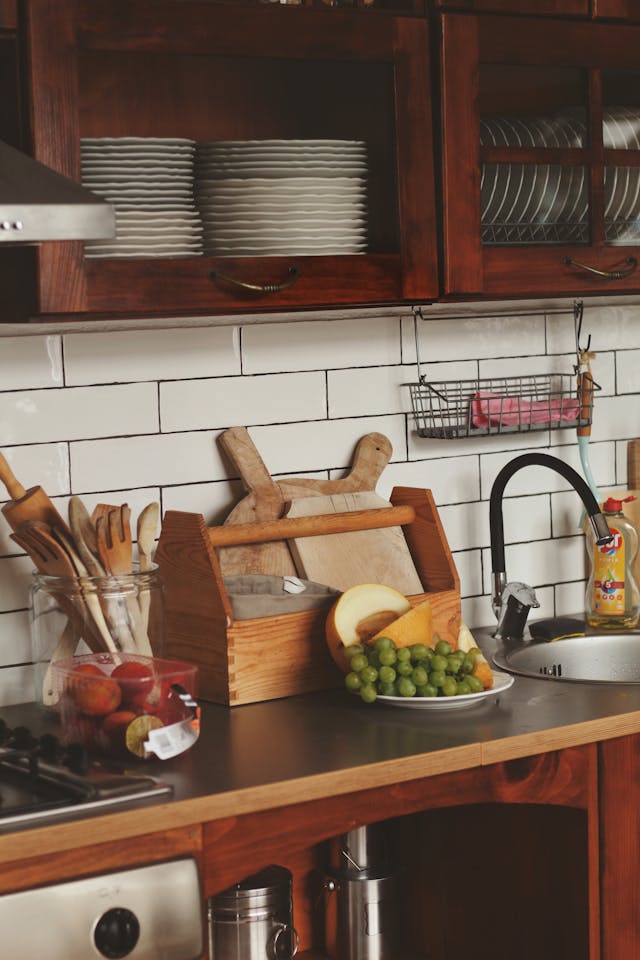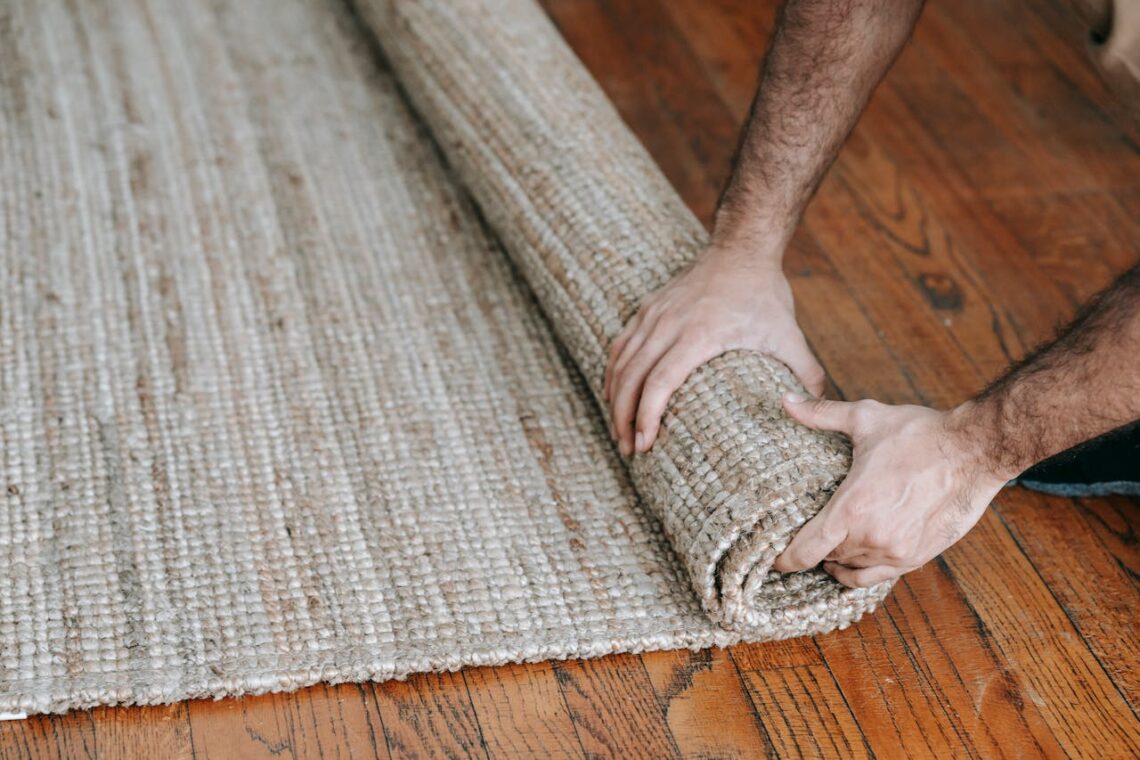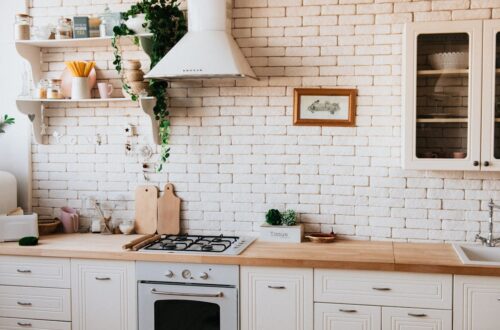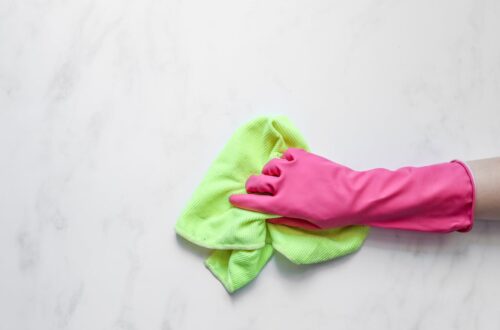Moving out is like ending a long-term relationship—you want to leave things in good shape, but part of you also wants to skip the messy closure. If your landlord uses a checklist, be sure to go beyond it for maximum assurance.
Unfortunately, landlords, lease agreements, and security deposits don’t care about your emotional fatigue. One of the most scrutinized spaces during a final inspection? Your kitchen. Using eco-friendly ingredients is both safe for your health and your appliances.
Grimy ovens, dusty exhaust fans, sticky shelves, and greasy cabinets are red flags that could cost you part (or all) of your bond. The good news? With the right plan, you can deep clean your kitchen like a pro—no stress, no drama, and no complaints from your property manager. Taking your time to address these areas can significantly reduce landlord disputes.
Let’s break it down, step-by-step.
Why a Pro-Level Kitchen Clean Matters
According to a 2023 survey by RentBetter, over 64% of tenants lose part of their bond due to inadequate cleaning—especially in the kitchen. These techniques are not just for move-outs—they’re excellent for seasonal deep cleans too.
Why? Because it’s where grease, grime, and food residue quietly build up over time.

Deep cleaning your kitchen is more than surface-level tidying. It’s about giving attention to the often-ignored details and ensuring every area meets inspection standards. Make sure to ventilate the kitchen well while cleaning, especially when using vinegar or lemon-based solutions.
That’s where this end-of-lease kitchen cleaning checklist comes in.
Declutter Before You Disinfect
Decluttering isn’t just about tossing out expired goods—it’s about simplifying the space so cleaning becomes more effective and less overwhelming.
Take inventory of what you have and plan meals around remaining items to reduce waste before your move.
Cleaning becomes easier when you’re not moving around a pile of clutter. Empty spaces allow you to notice hidden spills, crumbs, or grease buildup.
- Remove all food from the fridge and pantry.
- Discard expired sauces, spices, and half-used jars.
- Empty and clean out storage containers.
- Set aside items you want to donate or toss.
- Use labeled boxes—Keep, Donate, Toss—to speed up the sorting process.
Decluttering helps reduce your cleaning workload and makes it easier to access hidden grime.
Conquer the Cupboards
Consider lining your cleaned cupboards with fresh shelf liners—they not only look neat but also protect surfaces for the next occupant.
If your kitchen had pest issues in the past, this is the time to check for signs and sanitize thoroughly to prevent complaints.
- Use a toothpick or cotton swab dipped in vinegar to clean out tight cabinet corners where grime accumulates unnoticed.
- Mix warm water with a few drops of dish soap and white vinegar.
- Use a microfiber cloth to wipe down interiors and exteriors.
- For stubborn grease, apply a baking soda paste and gently scrub.
- Don’t forget the cabinet tops, handles, and hinges.
- Fridge & Freezer—No Mold, No Smell
After cleaning, place an open box of baking soda inside the fridge to absorb lingering odors—it’s a simple trick that landlords appreciate.
Use a toothbrush to clean around the door seals and rubber gaskets, which often trap moisture and lead to mold growth.
Defrost the freezer ahead of time to avoid water leakage, and dry the inside completely before closing the door for good.
Unplug the unit.
- Remove shelves and drawers—soak in warm soapy water.
- Wipe interior walls with a mix of vinegar and baking soda.
- Leave the doors open afterward to prevent odor or mold buildup.
- Banish Baked-On Grime From the Oven
Don’t forget to remove and soak the racks separately—they often hold onto stubborn stains that need scrubbing with steel wool or a non-abrasive pad.
Use an old toothbrush to scrub the corners and crevices of the oven door where grime tends to hide.
If your oven has a self-cleaning feature, ensure you follow the manual’s instructions carefully—misuse can lead to damage or unpleasant odors.
Make a paste with baking soda and water.
Spread over interior surfaces (avoid heating elements).
Let sit overnight.
Wipe clean and spray with white vinegar for shine.
For the oven door glass, use a razor blade scraper gently to lift off burnt stains. This process not only saves your bond but also ensures a hygienic handover of your space.
Sinks & Drains—The Forgotten Dirt Traps
Check for signs of mold under the sink and wipe down the cabinet base with an anti-mildew spray if needed.
You can also pour a mix of baking soda and vinegar followed by boiling water down the drain to flush it clean and remove any foul odors.
- Polish taps and handles with a microfiber cloth to eliminate water spots and fingerprints for a sparkling finish.
- Scrub with baking soda and dish soap.
- Use vinegar and hot water to flush the drain.
- Drop lemon peels and ice cubes into the disposal and run it for 30 seconds.
- Shine stainless steel sinks with a final rinse of vinegar and a soft cloth polish.
Make Your Stove Sparkle
- Wipe beneath the burners and lift the stovetop if it’s designed to open—you’d be surprised what collects underneath over the years.
- Use cotton swabs dipped in vinegar to clean tight spaces around the knobs where grease often hides.
- Dry all the parts thoroughly before reassembling to prevent rust and keep everything looking pristine.
- Soak removable parts (burner caps, knobs, grates) in warm soapy water.
- Use an old toothbrush to get into crevices.
- Wipe the surface using an all-natural degreaser like vinegar and lemon juice.
Floors & Tiles—Grime-Free Groundwork
Don’t forget to clean baseboards and corners where dust and food crumbs settle unnoticed.
For tiled areas, consider using a toothbrush or grout brush with a baking soda paste to brighten dirty grout lines.
Go over the floor one last time with a clean mop to ensure no residue or streaks are left behind.
- Sweep and vacuum all corners and under appliances.
- Mop with a vinegar-water solution or pH-neutral cleaner.
- Use a scrub brush or grout cleaner for tile lines.
- Let the floors dry completely to avoid streaks.
- Range Hood & Exhaust Fan—Grease Magnets
Wipe down the exterior hood, especially the area above the stovetop where grease splatters accumulate.
Ensure the filters are fully dry before reinstalling to prevent mold growth inside the unit.
If your exhaust fan has a light, clean the cover so the kitchen stays bright and welcoming for the next tenant.
- Remove the filters and soak them in hot water with dish soap and baking soda.
- Scrub with a stiff brush.
- Wipe down the interior and fan blades.
- Once dry, reassemble and test it.
Final Touches That Make a Big Difference
Look up—ceiling corners and light fixtures often gather cobwebs or grease in the kitchen area.
Empty and wipe down all bins, including recycling, to avoid lingering odors after you leave.
Give your floor one last sweep before locking the door—it’s a simple gesture that leaves a lasting impression.
- Wipe light switches and power outlets.
- Clean skirting boards and corners.
- Wipe down trash bins inside and out.
- Replace the trash bag before leaving.
- Bonus Tip: Check the Inspection Checklist
- No food residue in the pantry or drawers.
- Stovetop and oven are degreased.
- Walls behind appliances are wiped.
- Floors, tiles, and baseboards are spotless.
Deep Clean Your Kitchen Like a Pro (and Leave with Confidence)
When you’re juggling boxes, moving trucks, and change-of-address forms, kitchen cleaning may feel like an afterthought. But a sloppy kitchen can mean a slashed deposit or a tense final inspection. Regular upkeep before moving makes the deep cleaning process much more manageable.
Luckily, with this step-by-step guide, you now know how to deep clean your kitchen like a pro. If your landlord uses a checklist, be sure to go beyond it for maximum assurance.
From greasy cabinets to oven doors and tile grout, you can deep clean your kitchen like a pro without stress—and move out with peace of mind (and your full bond!). Make sure to ventilate the kitchen well while cleaning, especially when using vinegar or lemon-based solutions.





